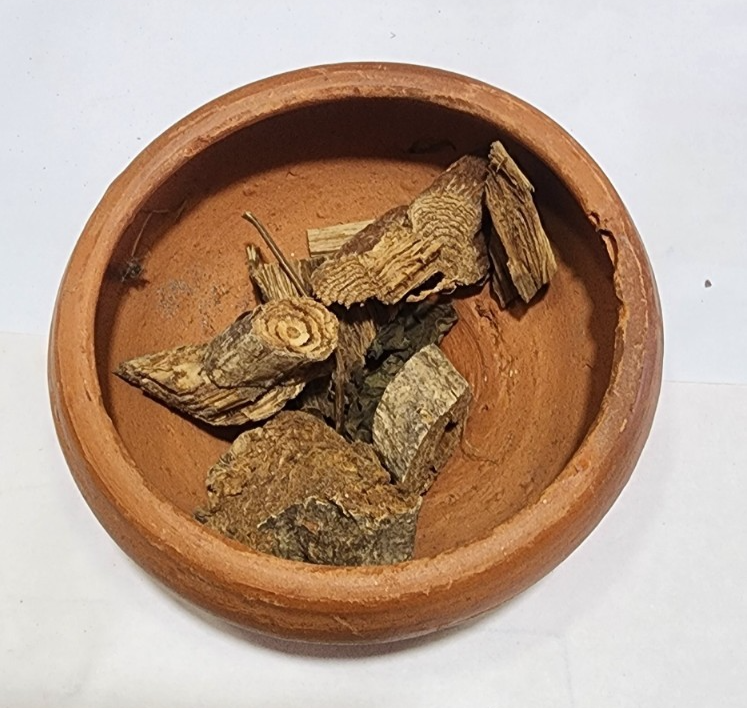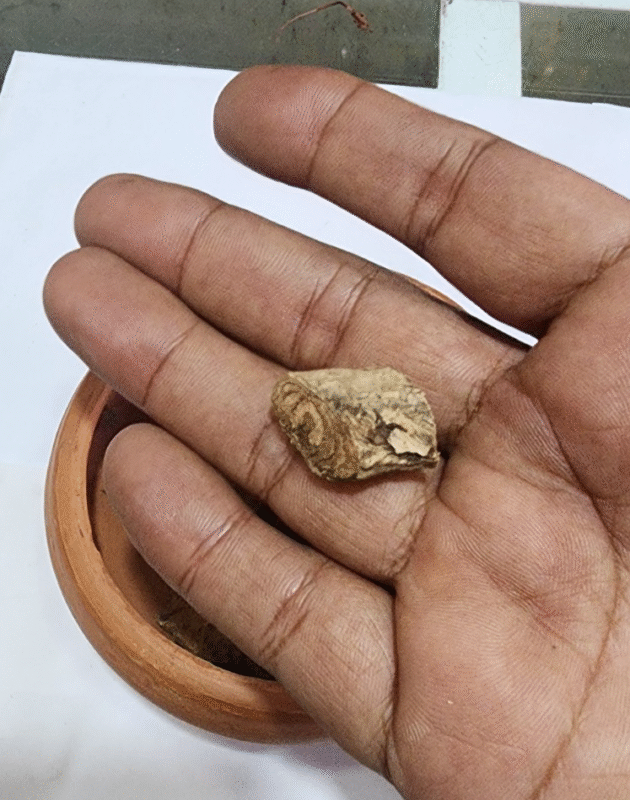Introduction: A Verdant Gem of Sri Lanka Elephant creeper
Sri Lanka, often celebrated as the “Pearl of the Indian Ocean,” is a land of captivating beauty and extraordinary natural richness. This island nation is globally renowned for its exceptional biodiversity, boasting the highest diversity per unit area in Asia, making it a critical biodiversity hotspot, particularly for its unique and endemic flora. Within this vibrant ecological tapestry, countless plant species thrive, each contributing to the island’s unique character and holding profound significance within its natural and cultural heritage.
Among these botanical wonders is a fascinating climbing plant, Argyreia populifolia. Although its scientific classification has seen revisions over time, its deep-rooted presence and local importance as a native species remain undeniable. This article aims to explore the botanical characteristics, traditional applications, and ecological contributions of this remarkable plant, illuminating its integral role within Sri Lanka’s rich natural environment and its enduring connection to the island’s traditional practices. By highlighting such a specific botanical subject, the intention is to engage a wide audience interested in Sri Lanka’s natural heritage, drawing attention to the intricate details that make its biodiversity so special.
Unraveling Its Identity: Names and Nomenclature of Elephant creeper
The Scientific Name Journey
The plant commonly referred to in many sources as Argyreia populifolia Choisy has undergone a significant taxonomic re-evaluation. Current botanical consensus recognizes
Argyreia populifolia Choisy as a homotypic synonym for the accepted scientific name: Argyreia kleiniana (Schult.) Raizada. This update is essential for accurate scientific identification and reflects the ongoing refinement of plant classification. This remarkable climber belongs to the Convolvulaceae family, widely known as the morning glory family. The genus name
Argyreia itself originates from the Greek word ‘Argyros,’ meaning silvery. This etymology often refers to the characteristic silvery lower surface of the leaves found in many species within this genus, a feature notably present in
Argyreia populifolia due to its densely pubescent undersides.
Common Names in Sri Lanka for Elephant creeper
In Sri Lanka, Argyreia populifolia is known by several local names, reflecting its cultural integration. In Sinhala, it is commonly called Girithilla. Tamil speakers refer to it as
Sindu kodi. An evocative English common name for the plant is the
Sri Lankan Elephant Creeper , a descriptor that hints at its robust, climbing growth habit.
Clarifying “Similar Names” and Avoiding Confusion
The genus Argyreia is diverse, and several species, particularly those also found in Sri Lanka, can lead to confusion due to similar common names or botanical characteristics. Precise identification is critical for both scientific study and the safe application of traditional remedies.
A common point of confusion arises with Argyreia speciosa, which is also widely known as “Elephant Creeper” or “Vriddhadaru”. While
Argyreia populifolia bears the English common name “Sri Lankan Elephant Creeper,” it is important to distinguish it from A. speciosa. Argyreia speciosa is native to the broader Indian subcontinent and holds a much more extensive range of applications in Ayurvedic medicine, including its notable potential psychotropic effects due to its high alkaloid content (such as ergine and isoergine), and its traditional use as a Rasayana (rejuvenative agent) and aphrodisiac. In contrast,
Argyreia populifolia‘s documented traditional uses in Sri Lanka are specific and do not include these psychotropic or broad Rasayana properties. This distinction is paramount for traditional practitioners and anyone seeking to utilize these plants, as misidentification could lead to unintended consequences.
Another distinct Argyreia species found in Sri Lanka is Argyreia zeylanica, known locally as ‘Manpanchan’ in Tamil and ‘Mustai’ in India. Interestingly, like
A. populifolia, the leaves of A. zeylanica are also consumed as a vegetable in Sri Lanka , indicating a shared culinary practice within the genus. However, its specific medicinal applications, such as for jaundice, diabetes mellitus, peptic ulcers, cardiovascular diseases, and wounds, differ from the documented uses of
A. populifolia. Further examples of
Argyreia species in Sri Lanka include Argyreia osyrensis, known as Dumbada in Sinhala , and the exotic
Argyreia nervosa, referred to as Maha Dumbada. It is also important to clarify that information regarding
Betula populifolia (Gray Birch), a tree species, is unrelated to Argyreia populifolia despite the similar-sounding name, as they belong to entirely different plant families and ecosystems.
A Botanical Portrait: Characteristics and Habitat
Growth Habit of Elephant creeper
Argyreia populifolia, or A. kleiniana, is characterized as a climbing shrub or liana. This means it grows by twining and ascending over other vegetation, a common adaptation for plants thriving in forest environments where competition for light is intense. Its stems are typically smooth (glabrous), though younger parts may exhibit sparse hairiness (pubescence).
Leaves
The plant’s leaves are arranged alternately along the stem and are broadly ovate in shape, typically measuring between 8 and 20 cm in length and 5 to 15 cm in width. They terminate in a pointed tip (acute to shortly acuminate apex) and have a heart-shaped to round base (cordate to round base). The upper surface of the leaves is smooth or sparsely hairy, while the lower surface is notably covered with dense hairs, which can give it a distinctive silvery appearance, aligning with the etymology of the genus name “Argyreia”.
Flowers
Argyreia populifolia produces its attractive flowers in dense, many-flowered clusters known as axillary corymbose cymes, emerging from the leaf axils. The corolla, or petal structure, is funnel-shaped and displays a delicate pinkish-white hue. The corolla tube measures 3-4 cm long, and the spreading limb of the flower can reach 4-6 cm across. The five sepals, which form the outermost part of the flower, are sparsely hairy on their exterior.
Fruits of Elephant creeper
Following successful pollination, the plant develops globose berries, typically 1-1.5 cm in diameter, containing 2-4 seeds. A distinguishing characteristic of the fruit is that the calyx, the outermost whorl of sepals, becomes accrescent, meaning it enlarges and persists around the developing fruit.
Flowering and Fruiting Season
This species typically flowers and fruits during the months of November to January , providing a specific seasonal window for its propagation and observation in its natural habitat.
Habitat and Distribution
Argyreia populifolia is found thriving in degraded forests and seasonally dry tropical biomes. This indicates its adaptability to environments that may have experienced some level of disturbance or are characterized by distinct wet and dry seasons. In Sri Lanka, its presence has been specifically documented in freshwater marsh ecosystems, such as those located in the southeastern outskirts of Colombo city, within the Colombo District of the Western Province. It is also noted as part of the flora in Village Tank Cascade Systems (VTCS) , which are traditional agro-ecological systems. While some historical sources and assessments have identified
Argyreia populifolia as “endemic to Sri Lanka” , current botanical understanding clarifies its native range extends to Southwest India as well. This shared distribution highlights a botanical and ecological connection between these two regions.
Conservation Status
Nationally, Elephant creeper is currently categorized as “Least Concern (LC)” on Sri Lanka’s National Conservation Status list. This classification suggests that, at present, the species is not facing a high risk of extinction in the wild. It is also noted as not being legally protected. While a “Least Concern” status is generally positive, the fact that its habitats include “degraded forests” and “freshwater marshes” in urbanizing areas like Colombo implies a subtle yet significant underlying vulnerability. Even if the species itself is widespread, specific local populations can be susceptible to habitat loss, fragmentation, pollution, and other human activities. This means that a classification of “Least Concern” does not diminish the importance of protecting its specific micro-habitats from ongoing anthropogenic pressures.
Echoes of Tradition: Medicinal and Culinary Heritage
Traditional Uses in Sri Lanka
Argyreia populifolia holds a practical and valued place in Sri Lankan traditional medicine and diet, reflecting centuries of indigenous knowledge and a deep connection between communities and their natural environment.
The young leaves of Argyreia populifolia are traditionally consumed as a vegetable. They are particularly noted for their role in promoting digestive health, specifically in alleviating constipation and improving appetite. This culinary use underscores its integration into local diets as a nutritious green leafy vegetable, a practice common for various
Argyreia species in the region, such as A. zeylanica.
Beyond its culinary role, various parts of the plant are utilized for specific therapeutic purposes. The juice extracted from young shoots is traditionally applied to the gums for sanitation purposes, suggesting its historical use in oral hygiene. Furthermore, the roots of
Argyreia populifolia are traditionally employed in the treatment of swellings and for addressing dog bites , indicating its historical application in wound care and managing inflammatory conditions. Modern scientific research has begun to explore and validate these traditional uses. Studies have confirmed the anti-inflammatory activity of
Argyreia populifolia leaf juice , providing a scientific basis for its traditional application in conditions like joint inflammation and arthropod bites. This scientific corroboration strengthens the credibility of indigenous knowledge systems and highlights the plant’s therapeutic potential.
Chemical Constituents
Preliminary scientific investigation into Argyreia populifolia has identified key chemical constituents in its fruits. These include triterpene derivatives, such as friedelin, along with cinnamic acid esters, β-sitosterol, and octasonol. The presence of these bioactive compounds suggests a pharmacological basis for its traditional medicinal effects and invites further research into their specific therapeutic potentials and mechanisms of action.
Context within Sri Lankan Ethnobotany
Sri Lanka possesses a rich and ancient heritage of traditional medicine, encompassing well-established systems like Ayurveda, Deshiya Chikitsa, Siddha, and Unani. These systems collectively utilize thousands of plant species for healing and well-being.
Argyreia populifolia is an integral part of this extensive botanical pharmacopoeia, demonstrating the deep, enduring connection between the island’s diverse flora and its traditional healing practices. Its continued use, particularly in practical applications for daily health and specific ailments, highlights a profound cultural value rooted in the direct benefits it provides to local communities. This illustrates how local populations have historically, and continue to, interact with and benefit from their immediate natural environment, showcasing a form of cultural significance distinct from elaborate rituals or folklore, yet equally vital.
V. The Giritilla’s Place in Sri Lanka’s Ecosystem
Ecological Role
As a climbing shrub or liana, Argyreia populifolia plays a significant role in its ecosystems by contributing to the structural complexity of the vegetation. Its robust climbing habit allows it to form dense canopies or undergrowth, providing critical cover, potential nesting sites, and food sources for various fauna. Its presence in degraded forests suggests its resilience and ability to colonize and thrive in disturbed areas, potentially contributing to ecological succession and habitat restoration in such environments.
Interaction with the Environment
Elephant creeper is not merely a passive component of its environment; it actively interacts with it. Studies have shown that its leaves exhibit stomatal responses to air pollutants. This sensitivity indicates its potential as a bio-indicator species, offering valuable insights into air quality in urban or industrial areas where it grows. This suggests the plant is not just a passive element but actively responds to environmental stressors, positioning it as a valuable tool for environmental monitoring and research. Furthermore, its documented presence in freshwater marsh ecosystems highlights its role in these vital wetland environments, which are crucial for flood retention, water purification, and supporting a diverse array of aquatic and semi-aquatic biodiversity.
Contribution to Biodiversity
The Elephant creeper is an integral part of Sri Lanka’s incredibly diverse angiosperm flora, which boasts a high number of endemic species. Its inclusion in assessments of ecosystem health within Village Tank Cascade Systems further underscores its integration into human-modified landscapes and its contribution to the overall ecological balance and resilience of these traditional agro-ecosystems. Its presence helps maintain the intricate web of life in these unique habitats.
Conservation Context
Despite its national classification as “Least Concern” , the specific habitats where
Argyreia populifolia thrives, particularly wetlands and degraded forests, face continuous and increasing pressures from human activities. These threats include unauthorized filling for development, waste disposal, and pollution from effluent discharges. While the species itself may be resilient and widespread, the integrity and health of its specific micro-habitats are a growing concern for the long-term sustainability of its populations and the ecosystems it inhabits. This emphasizes that a “Least Concern” status does not negate the need for proactive habitat protection and careful environmental management.
Conclusion: Preserving a Natural Treasure
Elephant creeper , now scientifically recognized as Argyreia kleiniana, stands as a testament to Sri Lanka’s extraordinary botanical wealth. From its distinctive pinkish-white, funnel-shaped flowers and broad, densely pubescent leaves to its practical traditional uses in health and diet, and its dynamic ecological role in diverse habitats, this resilient climbing plant is a quiet yet vital component of the island’s natural heritage.
Its journey through botanical nomenclature, its native distribution across both Sri Lanka and Southwest India, and its “Least Concern” conservation status underscore its established presence. Yet, the ongoing pressures on its specific habitats, such as wetlands and degraded forests, serve as a reminder of the continuous need for vigilance and protection.
Understanding and valuing species like Argyreia populifolia is crucial for sustaining the island’s unparalleled biodiversity and the rich traditional knowledge systems that depend on it. By appreciating these unsung botanical heroes, Sri Lanka reinforces its commitment to safeguarding its natural treasures for future generations, ensuring that the enigmatic Giritilla continues to thrive in its vibrant home. This approach to conservation, even for seemingly common species, is essential for maintaining the intricate balance of ecosystems and preserving the cultural practices intertwined with them.
You Want More info or Buy Elephant creeper ? Please Send us an email or Contact us via Site




